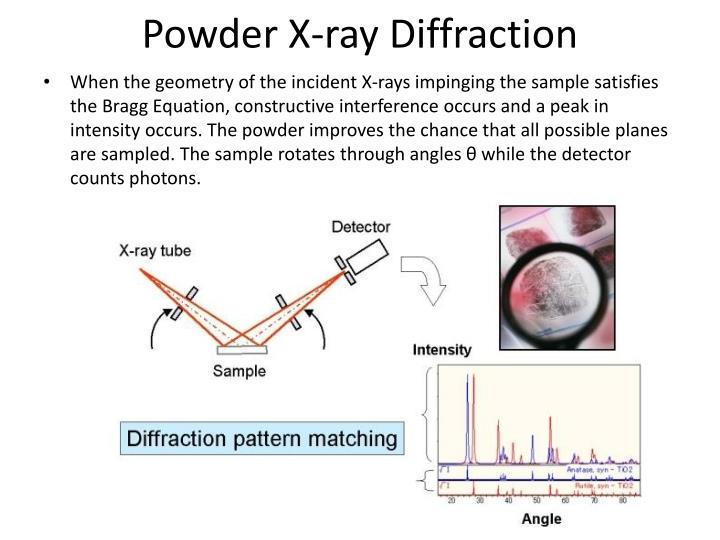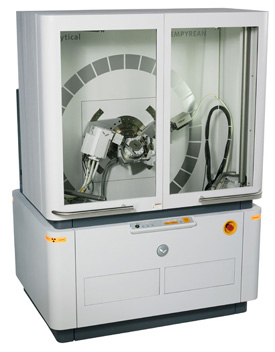
In this configuration, the X-ray tube and the detector both move through the angle theta ( ), and the sample remains stationary. Simplified sketch of one possible configuration of the X-ray source (X-ray tube), the X-ray detector, and the sample during an X-ray scan. XRD does not, however, provide the quantitative compositional data obtained by the electron microprobe or the textural and qualitative compositional data obtained by the scanning electron microscope.įigure 1. Some mineralogical samples analyzed by XRD are too fine grained to be identified by optical light microscopy. Other information obtained can include the degree of crystallinity of the mineral(s) present, possible deviations of the minerals from their ideal compositions (presence of element substitutions and solid solutions), the structural state of the minerals (which can be used to deduce temperatures and (or) pressures of formation), and the degree of hydration for minerals that contain water in their structure. If the sample is a mixture, XRD data can be analyzed to determine the proportion of the different minerals present. XRD can provide additional information beyond basic identification. XRD is particularly useful for identifying fine-grained minerals and mixtures or intergrowths of minerals, which may not lend themselves to analysis by other techniques. XRD provides the researcher with a fast and reliable tool for routine mineral identification. In many geologic investigations, XRD complements other mineralogical methods, including optical light microscopy, electron microprobe microscopy, and scanning electron microscopy. One of these methods, X-ray powder diffraction (XRD), is an instrumental technique that is used to identify minerals, as well as other crystalline materials. Numerous analytical techniques are used to characterize these materials. Rocks, sediments, and precipitates are examples of geologic materials that are composed of minerals. Examples of applications of this method to geologic studies are provided.

This handout provides background on the use and theory of X-ray powder diffraction. If you are interested in working with us, please get in touch to discuss any potential contract work, or for one-off measurements.USGS Information Handout: X-Ray Powder Diffraction X-Ray Powder Diffraction Together these techniques can provide a comprehensive picture of the solid state properties of any crystalline material. Furthermore, our powder diffraction facility has the capability to study materials under different gaseous vapours, providing further insights into material stability and reactivity. This can provide invaluable insight into the stability of different crystalline materials under various conditions and the identification of novel polymorph phases. At Newcastle, we have extensive experience in the study of single crystal X-ray diffraction under high-pressure, temperature ranges of 2 – 500 K and under the irradiation of light. In addition, further information can be gleaned by conducting X-ray diffraction analyses under non-ambient conditions. Identification of supramolecular interactions.Molecular geometry within the solid state.Phase identification and quantification.Absolute configuration of chiral materials.In particular, X-ray diffraction can provide:

In combination, these complementary techniques can greatly enhance the understanding of the structure and composition of any crystalline material, and can be performed on samples comprising both single crystals and bulk powders. At Newcastle University we have capabilities to study materials using Single Crystal XRD and Powder XRD. X-ray diffraction (XRD) underpins techniques that can be used to characterise and investigate the properties of crystalline materials in the solid state, providing insight into the behaviour of materials, enabling the understanding of structure-function relationships.


 0 kommentar(er)
0 kommentar(er)
